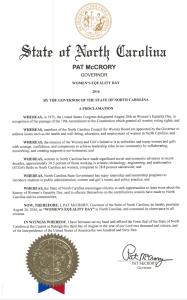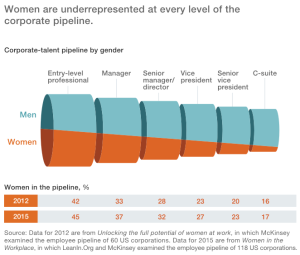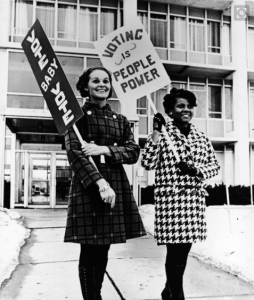Yesterday was the national celebration of Women’s Equality Day and many members of the WCU community are unaware of its existence. When speaking with students and faculty on campus and on social media, people weren’t really sure what to make of the (holi)day. A video from last year published on WCJ article by Hunter Bryn, Alexandra McQueen and Chrissie Mainster looked at student’s reactions to Women’s Equality Day.
Gov. Pat McCrory delivered a proclamation designating Aug. 26, 2016 ‘Women’s Equality Day’ for North Carolina. In the proclamation, it is stated that the celebration of Women’s Equality Day is meant to provide citizens with the opportunity to “educate themselves on the contributions women have made to North Carolina and its communities.”

Women’s Equality Day proclamation from Gov. Pat McCrory.
The significance of the date, Aug. 26, is meant to commemorate the anniversary of the 19th Amendment, which gave women the right to vote in 1920. Women have made many advances in the pursuit of equality since gaining the right to vote 96 years ago, but the fight for equality is far from over in areas such as the workplace environment, education and politics.
WalletHub conducted research that ranked ‘2016’s Best and Worst States for Women’s Equality’. North Carolina ranked:
- 36th overall
- 47th in workplace environment
- 23rd in education and
- 28th in political empowerment for women.
In this ranking, Utah ranked the worst, ranking 39th for political empowerment and 50th for both workplace environment and education. For such in unimpressive national ranking, North Carolina’s celebration of Women’s Equality Day is primarily focused on the “significant social and economic advances” women have made in recent decades. According to McCrory’s proclamation, women make up 30.5 percent of STEM careers in North Carolina, compared to 28.8 percent nationwide.
Internationally, the U.S. does not make the top 10 list for gender-equal countries and it even falls behind several developing nations. The 2015 study conducted by the World Economic Forum ranked the United States 28th out of 145 countries for women’s equality, with Iceland coming in first.
Women continue to face many obstacles in the workplace, from the proverbial glass ceiling to the gender pay gap. Although a woman may have experience and education equal to or exceeding that of her male counterpart, it is more difficult for her to get promotions, vacation or equal pay. Research shows that women make an average of 77 cents to every male’s dollar. 
According to a Forbes article from???, women must fight for recognition and respect in the workplace, and find it difficult to hold positions of power in male-dominated fields. Women’s appearance and state of dress are also examined more critically in the workplace. Research detailed in a New York Times article notes that makeup increases “perceptions of a woman’s likability, her competence and her trustworthiness.”
The problems women face in education was extensively evaluated in a series of articles on The Western Carolina Journalist in May. The pay gap, unfair maternity leave, and the discrimination against female teachers who have children are among these problems.
The capability of women in politics is often debated because the perception of women in leadership positions is skewed by gender biases. Women who act feminine or caring are seen as ‘too soft’, while women who exhibit normal leadership qualities are too tough and not well-liked.
Women’s appearance is also examined and debated more often than men’s in politics. At the beginning of the 2016 election season, it was rare to find an article mentioning Hillary Clinton that didn’t also debate her choice of clothing. Clinton’s affinity for pantsuits has made headlines among top news organizations, some of them questioning if her choice in outfit is somehow representative of a Clinton presidency.
Women have made great strides since first gaining the right to vote in 1920. The female vote won Obama the presidency in 2012 by 12 points. In the 2016 election, the female vote may be more crucial than ever with major issues at stake such as; access to

Women encourage others to exercise their right to vote. Photo from The Huffington Post.
reproductive healthcare; acceptable maternity leave; and a decrease or end to the gender pay gap.
Other than declaring Aug. 26 Women’s Equality Day, what is the government doing to improve gender equality? The Obama Administration has increased the public’s awareness of women’s issues and conducted research into issues such as the gender pay gap and decreased some gender barriers for women in the workforce. The administration has also taken a stance against gender-based violence with Executive Order 13623recog, which recognizes and holds people accountable, globally, for violence committed against females. The administration also expanded training in typically male-dominated fields of work and providing underprivileged women with the means to pursue higher education.
The fight for women’s equality will likely continue for decades to come. The pay gap alone is not expected to be resolved until 2133, or 117 years from now. Fortunately, along with women earning their right to vote on Aug. 26, 1920, they also gained the ability to make significant government and policy changes for their gender.


